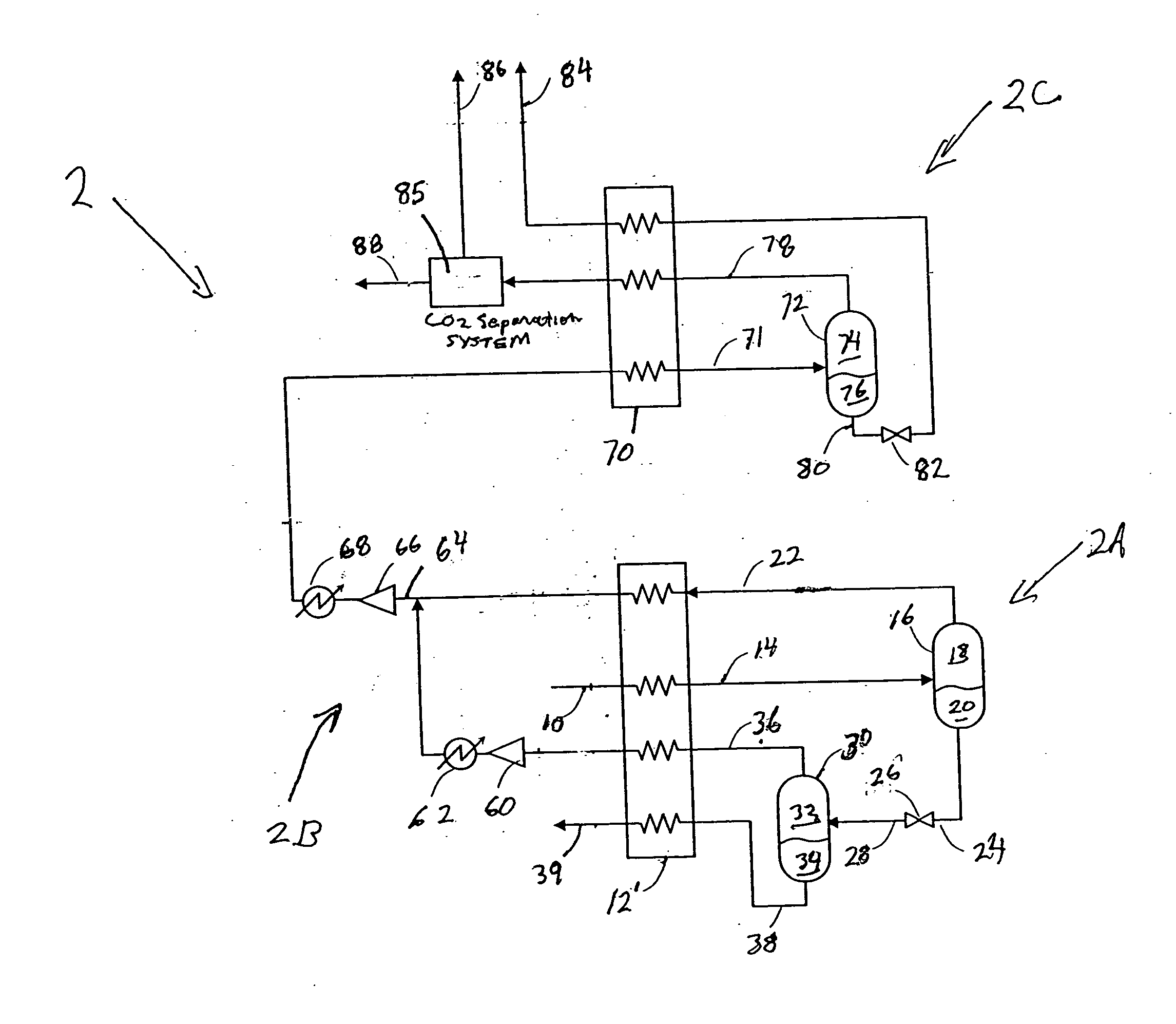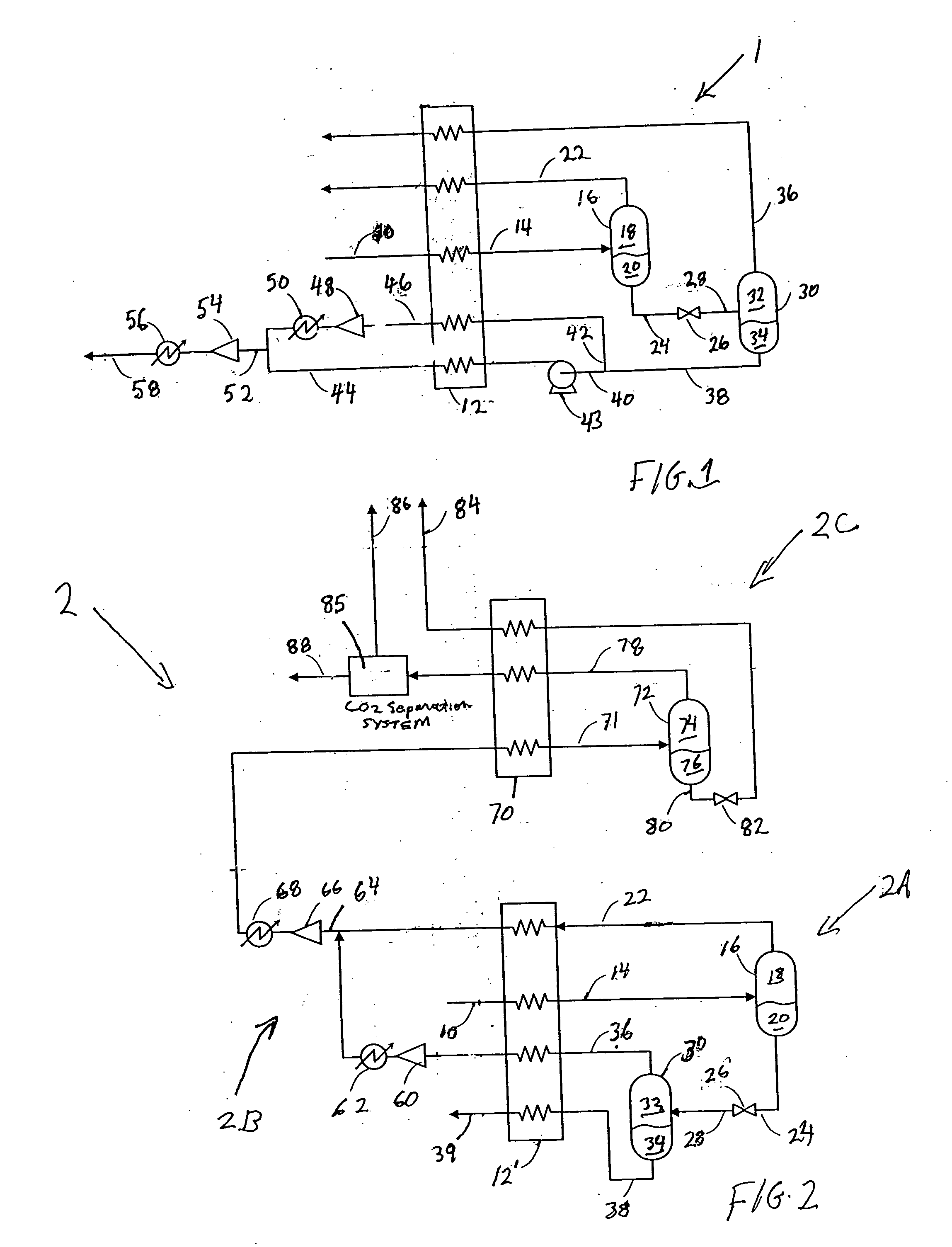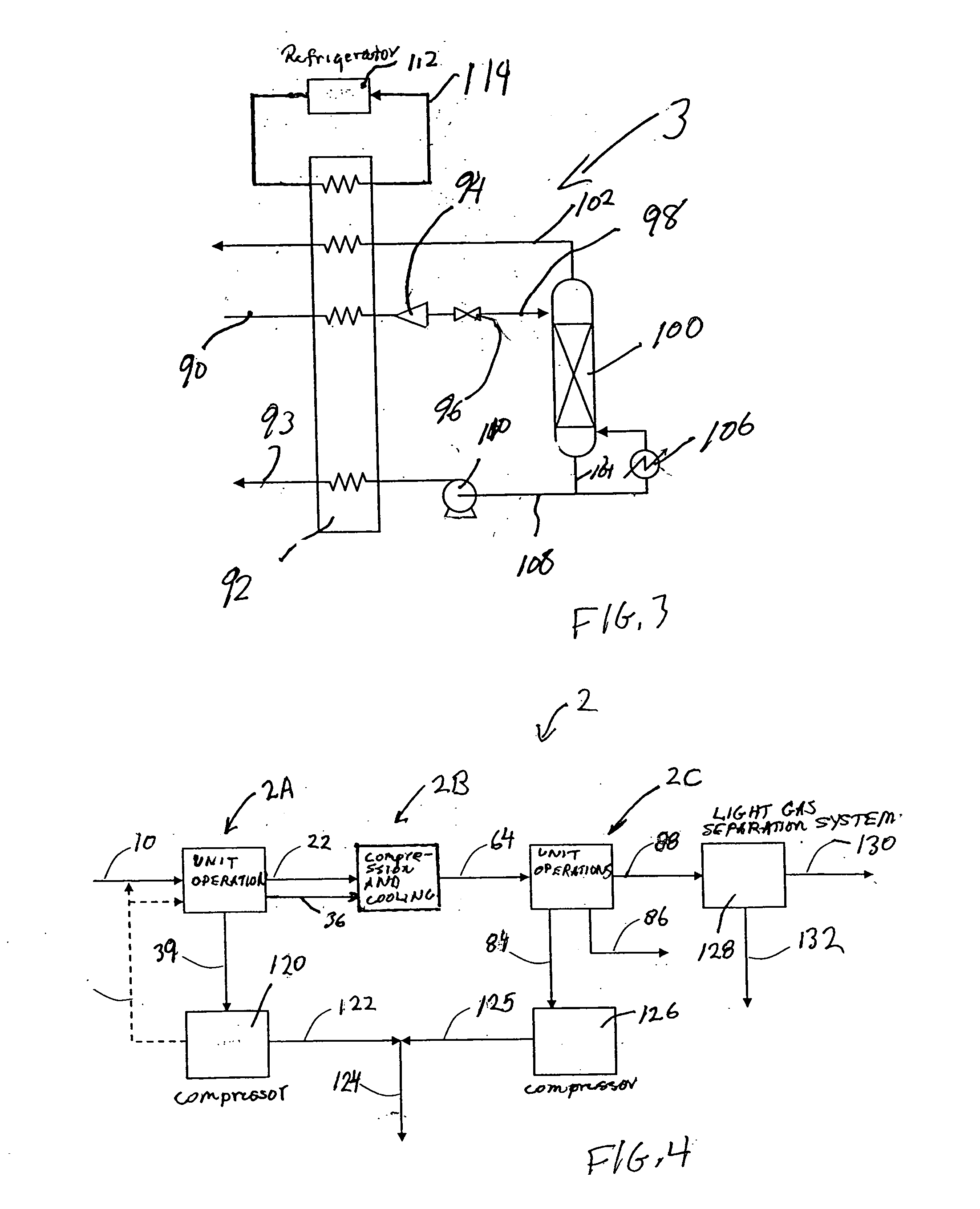Light gas component separation from a carbon dioxide mixture
a technology of light gas and carbon dioxide mixture, which is applied in the direction of lighting and heating apparatus, refrigeration machines, solidification, etc., can solve the problems that the low temperature process illustrated in these patents is ineffective for high carbon dioxide in the feed
- Summary
- Abstract
- Description
- Claims
- Application Information
AI Technical Summary
Benefits of technology
Problems solved by technology
Method used
Image
Examples
Embodiment Construction
[0023] With reference to FIG. 1 a process flow diagram of an apparatus 1 for carrying out a method in accordance with the present invention is illustrated that is designed to treat subcritical feed streams.
[0024] A pressurized feed stream 10 that is composed of a carbon dioxide containing gaseous mixture is obtained at a pressure in a range from between about 200 psia to about 850 psia. More preferably, the pressure of pressurized feed stream 10 is in a pressure range of between about 350 psia and about 750 psia. The pressurized feed stream 10 contains less than 10 mole percent helium and at least 50 mole percent carbon dioxide. Streams containing about 0.1 to 3.0 mole percent helium or greater may be treated. The source of pressurized feed stream 10 may be a natural well or a well head gas obtained at an oil well in which carbon dioxide has been used to enhance recovery. Alternatively, the source gas may be such well gas which has been previously compressed and / or purified and dri...
PUM
 Login to View More
Login to View More Abstract
Description
Claims
Application Information
 Login to View More
Login to View More - R&D
- Intellectual Property
- Life Sciences
- Materials
- Tech Scout
- Unparalleled Data Quality
- Higher Quality Content
- 60% Fewer Hallucinations
Browse by: Latest US Patents, China's latest patents, Technical Efficacy Thesaurus, Application Domain, Technology Topic, Popular Technical Reports.
© 2025 PatSnap. All rights reserved.Legal|Privacy policy|Modern Slavery Act Transparency Statement|Sitemap|About US| Contact US: help@patsnap.com



